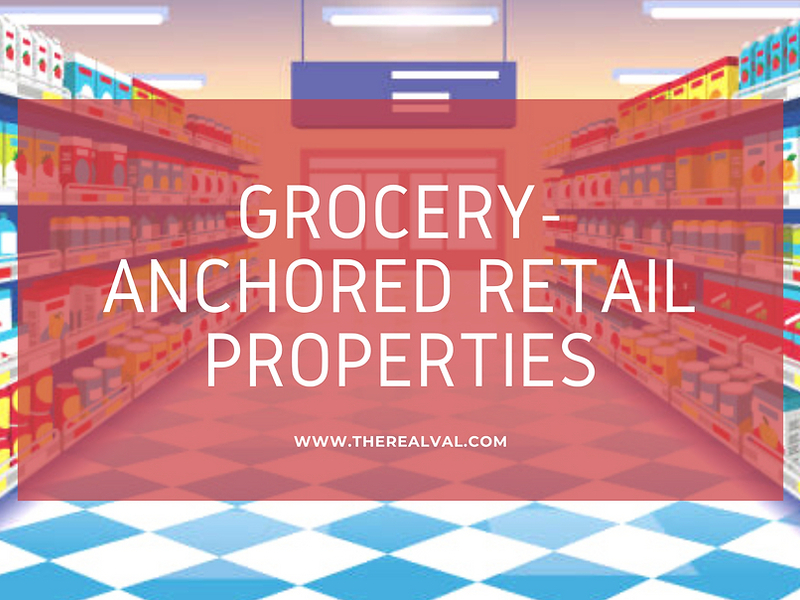For many years, grocery-anchored retail properties have stood as a fundamental pillar in the realm of commercial real estate. These properties serve as vital community centers where individuals procure their everyday essentials and more.
Grocery-anchored retail properties represent CRE developments distinguished by their primary anchor tenant, often a sizable supermarket or grocery store. These properties are typically a harmonious blend of diverse retail outlets, dining establishments, and service-oriented businesses, all meticulously crafted to cater to the diverse needs of the surrounding community. The presence of a well-established grocery store consistently attracts a steady flow of foot traffic, delivering mutual benefits to both the anchor tenant and the smaller enterprises nestled within the complex.
In this article, we shall explore the benefits of grocery anchored retail properties and the tips for analyzing them.
Benefits of investing in grocery anchored retail properties:
1. Steady Income Streams: The existence of a sizable, reliable anchor tenant ensures a continuous influx of patrons. Consequently, this underpins both the property's financial stability and the prosperity of the businesses operating within it. Even in the midst of economic downturns, people persist in their acquisition of groceries and essential items.
2. Adaptability in the E-commerce Era: In an age dominated by e-commerce, grocery-anchored retail properties have exhibited remarkable resilience. Despite the surge in online shopping, groceries and daily necessities maintain their status as items people prefer to procure in a physical setting.
3. Fostering Community Engagement: These establishments frequently evolve into vibrant community focal points, nurturing a sense of belonging and social interaction. Regularly scheduled events, promotions, and community outreach initiatives play a pivotal role in establishing robust bonds between tenants and the local populace.
4. Magnetism for Small-scale Enterprises: The presence of a prominent grocery store exerts a considerable pull on smaller retailers. The augmented foot traffic generated by the anchor tenant bestows visibility upon these smaller businesses, propelling their sales and facilitating their flourishing.
5. Reduced Vacancy Levels: The enduring patronage and the essential, need-based character of grocery-anchored retail properties result in diminished vacancy rates. These properties typically demonstrate greater resilience to economic contractions when juxtaposed with other types of retail real estate.
6. Robust Capitalization Yields: Investors frequently encounter appealing capitalization rates in grocery-anchored retail properties. The perception of reduced risk linked to these assets often translates into more enticing financing conditions.
7. Prospects for Appreciating Value: With the expansion of the local populace, the demand for grocery stores and related businesses tends to surge, potentially culminating in an augmentation of property value over time.
Tips for analyzing Grocery anchored retail properties
1. Location: The importance of location cannot be overstated when it comes to evaluating grocery-anchored retail properties. The success of any retail property hinges significantly on its proximity to the right customer base. Therefore, it is crucial to scrutinize the location's demographics, traffic patterns, and surrounding competition. Seek out areas with substantial population density, robust income levels, and growth potential. Take into account factors such as accessibility, visibility, and the convenience of the location for both customers and tenants.
2. Strength of the Anchor Tenant: The anchor tenant, typically a grocery store, occupies a pivotal role in the prosperity of the retail property. It is imperative to assess the financial well-being, reputation, and lease terms of the anchor tenant. Resilient anchor tenants with a commendable track record have the capacity to draw a steady stream of foot traffic, rendering the property more appealing to other retailers. Furthermore, long-term lease agreements with the anchor tenant can confer stability upon your investment.
3. Tenant Diversity: The composition of tenants within the retail property is another critical factor. A diverse assortment of tenants, encompassing various retail and service enterprises, can broaden the appeal to a wider array of customers and reduce the risk associated with relying on a single industry. It is essential to analyze the lease agreements, lease durations, and tenant quality. Striking a balance between national and local retailers can provide a robust blend and minimize exposure to market fluctuations.
4. Lease Terms and Rental Income: Examine the lease agreements for all tenants, paying specific attention to rental rates, escalation clauses, and lease durations. Consistent and predictable rental income is paramount for a successful investment. Longer-term leases with built-in rent escalations can safeguard your investment against inflation. Be vigilant regarding any unconventional lease terms, such as rent-free periods or excessive tenant improvement allowances, as these could affect your return on investment.
5. Property Condition and Maintenance: Conduct a thorough evaluation of the physical state of the property. Well-maintained properties tend to exhibit higher tenant retention rates and can command more favorable rental rates. Evaluate the necessity for immediate repairs or capital improvements and factor these considerations into your investment analysis. Additionally, account for maintenance costs and responsibilities, as these elements can significantly impact your financial performance.
6. Market Analysis: Carry out an exhaustive market analysis to gain insights into the supply and demand dynamics within the local area. Take note of any forthcoming developments or shifts in the competitive landscape that might impact the property's performance. Stay informed about local economic trends and demographics that could influence the retail property's achievements.
7. Financing and Capitalization: Scrutinize your financing possibilities and the structure of capitalization. This encompasses considerations like the initial investment, potential financing expenses, and your return on investment. Develop a financing arrangement that maximizes your returns while effectively managing risk.
8. Exit Strategy: Always maintain an exit strategy in mind. Understand when and how you intend to divest from the property, whether it involves selling, refinancing, or other strategies. Be prepared for a range of market conditions and contemplate how your exit strategy aligns with your investment objectives.
To Conclude, thorough and meticulous research, as well as consistent, vigilant management, serve as the linchpins for securing enduring prosperity in your retail property investments. Keep in mind that seeking counsel from seasoned real estate experts, including brokers and property managers, can offer invaluable perspectives and direction at every stage of your venture.
Trending





